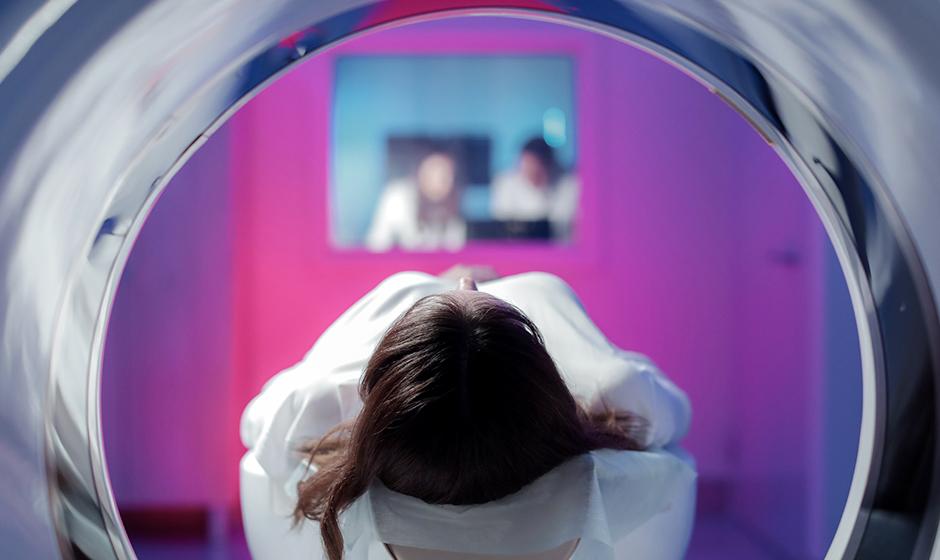
From X-rays to PET scans, our expert explains the true risks and benefits of different scanning technology used in health care, security and research.
Many of us are familiar with X-rays, the most common type of medical imaging. But how concerned should we be about the photons it and other imaging techniques expose us to when checking our bodies for damage or illness? Our Vancouver Coastal Health Research Institute expert, Dr. Vesna Sossi, puts the risks and benefits into perspective based on the science.
Q: Is it true that CT scans emit radiation, and should I be concerned if I have undergone several medical imaging tests?
A: Computer tomography (CT) scans, just like X-ray imaging, use photons to create images of internal tissues. Photons sit on the electromagnetic spectrum alongside visible light, radio waves and microwaves, but have higher energy. Thus, they are an ionizing radiation, which means they affect electrons inside the atoms of our body—and 99 per cent of our body is composed of hydrogen, oxygen, nitrogen and carbon atoms. Photons are preferentially absorbed by denser tissues such as bone, and much less in air-filled organs, such as lungs. The result is a picture that shows different types of tissues and body organs through contrast; typically lighter areas indicate tissues where photons have passed through, and darker areas where they were absorbed.
One of the best ways to understand the effects of the radiation from CT scans is to compare it to natural background radiation. According to the Canadian Nuclear Safety Commission, people in Vancouver are exposed to background radiation of around 1.25 millisieverts (mSv) each year. The Canadian average is 1.77 mSv. CT scans can range between 1.00 and 9.00 mSv. So, while this is still not very high, we do need to be vigilant about limiting the number of CT scans a patient receives per year. Canadian and provincial guidelines limit nuclear energy workers to 20-50 mSv per year, and research study volunteers to 10-20 mSv per year. Nothing is zero risk, but the level of radiation from one CT scan is not something I would worry about, especially when compared with the diagnostic utility.
Q: What about the radiation from X-rays, mammograms and the full body scanners at airports?
A: Unlike CT scanners, which rotate around the body to produce volumetric images, X-rays show only one perspective of our inner tissues. This requires less radiation exposure—usually 0.1 mSv for a chest X-ray and 0.42 for a mammogram1. The most commonly used full-body X-ray scans at airports are even lower, exposing individuals to around 0.00003–0.0001 mSv2. Many airport scanners however do not even use X-rays, but a technique called millimetre wave scanning, which does not deliver ionizing radiation. A dental X-ray is around 0.01 mSv. All of this is well below the safe exposure limits in Canada.
Q: Why are radioactive substances injected for PET scans?
A: Positron Emission Tomography (PET) scans use a radioactive tracer that attaches to certain targets in the body or mimics the behavior of naturally present substances, such as glucose. Most cancerous tumors use glucose inefficiently, and thus take up more tracer than the surrounding tissues. They appear as bright spots in the images, showing clinicians where a tumour is located and often how active it is. Similarly, dementia is characterized by very specific glucose uptake deficiency patterns in the brain. A tracer can reveal this pattern to aid in diagnosis. Detecting disease early leads to early interventions and supports the best possible outcome for patients. Typical radiation doses associated with PET scans are between 3.00 and 8.00 mSv.
Q: Is it true that MRIs and ultrasounds do not emit radiation?
A: While ultrasounds use sound waves, and so do not emit any radiation, magnetic resonance imaging (MRI) machines do emit electromagnetic radiation. MRIs cause hydrogen nuclei in the body to oscillate. The frequency of this oscillation is translated into an image of the internal tissues, including blood vessels, joints and organs. However, because electromagnetic radiation used in MRI is non-ionizing, it is very safe.
Q: What kinds of advances in scanning are happening right now?
A: There is ongoing research to reduce the amount of radiation patients are exposed to during these kinds of diagnostic scans. My background is in PET imaging, and I can say that, over the years, the introduction of more sensitive detectors and, more currently, the use of artificial intelligence are continuously reducing the average radiation dose needed to obtain high quality images. I believe this will continue to be the case across all scanning technologies.

1 University of Saskatchewan - Canadian Radiation Dose Calculator
2 Airport Full Body Screening: What is the Risk?


